Visit Budapest /Cestovanie po Budapešti
I wrote this post in English and Slovak language.
Hi,
We get up early in the morning to walk as much as possible. We are looking forward to it, because today, among other things, we will take a closer look at the Buda Castle, the Citadel, the Church of St. Matthew and much more. So without further ado, let's get down to it.
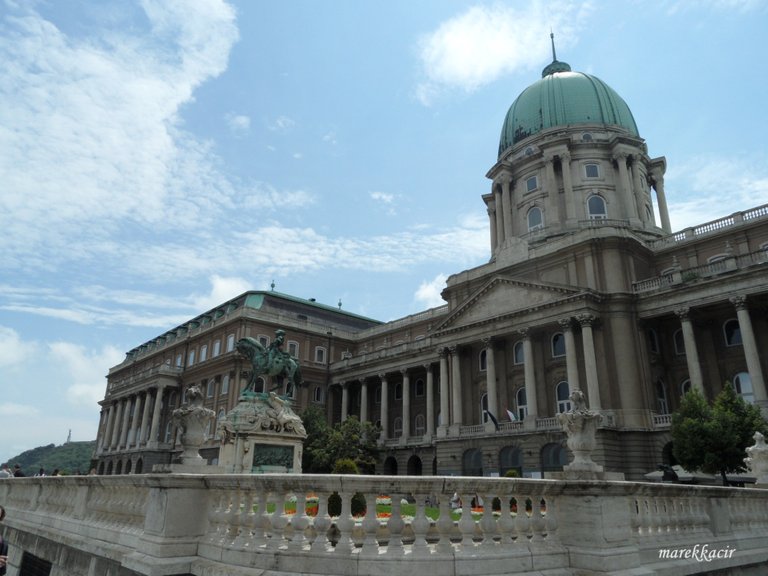
We get on the metro and under the river Danube we reach the other side of the city - Budin. Buda was the capital of Hungary, but from 1541 it became a provincial city of the Ottoman Empire. Bratislava thus became the capital of Hungary. It was not until 1686 that Buda was conquered by the Habsburg army after a six-week siege.
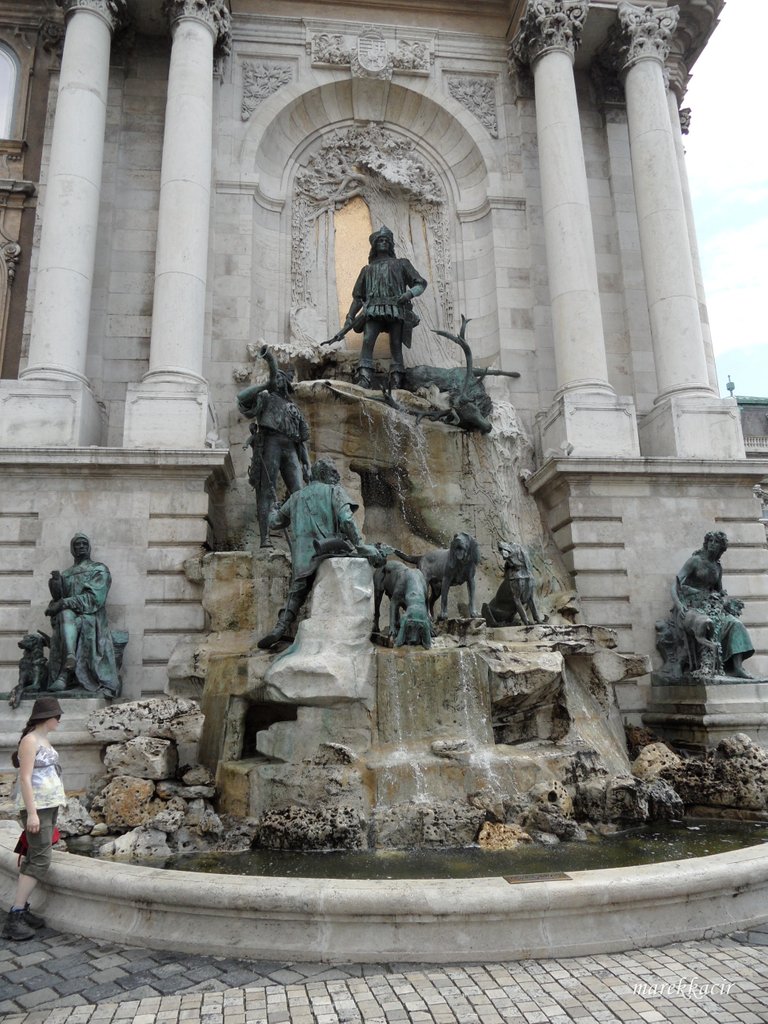
In 1703 Buda and Pest became free royal cities and in 1848 they became the capital of Hungary instead of Bratislava. Count István Széchenyi had great merit in the modernization of Pest and Buda. He also initiated the construction of the first chain bridge across the Danube.
On January 1, 1873, Budin, Pest and Old Budin were merged. At that time, in addition to Hungarians, Germans, Jews and Slovaks made up a significant part of the population. This changed during World War II, when most Jews were deported to extermination camps.
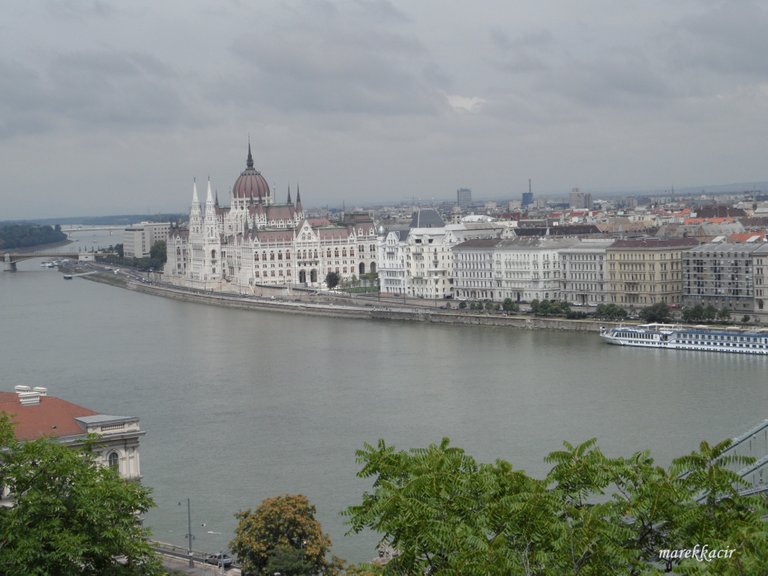
The city experienced another difficult period in 1944, when the retreating German army blew up all the bridges over the Danube and defended itself on the right bank for 6 months. The castle quarter was almost razed to the ground thanks to constant shelling and bombing.
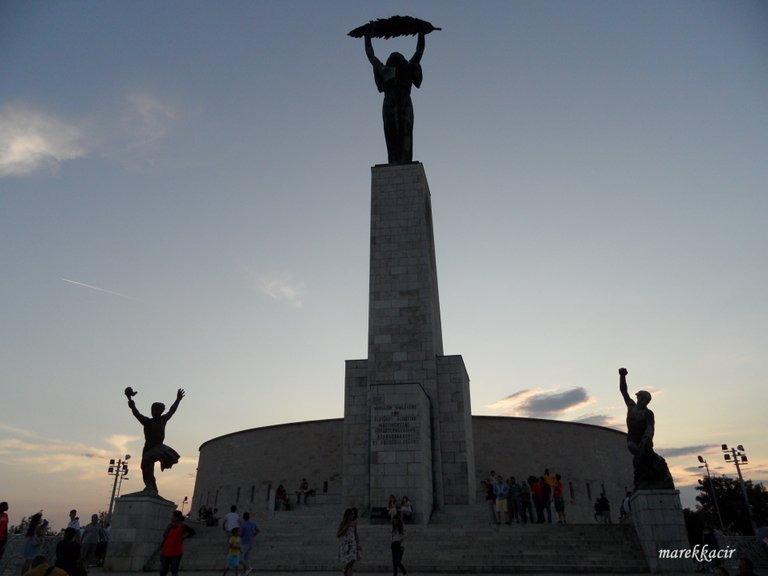
In the fall of 1956, tanks returned to the city again. Budapest became the center of the revolution against communist power. The popular uprising was bloodily suppressed by Soviet tanks.
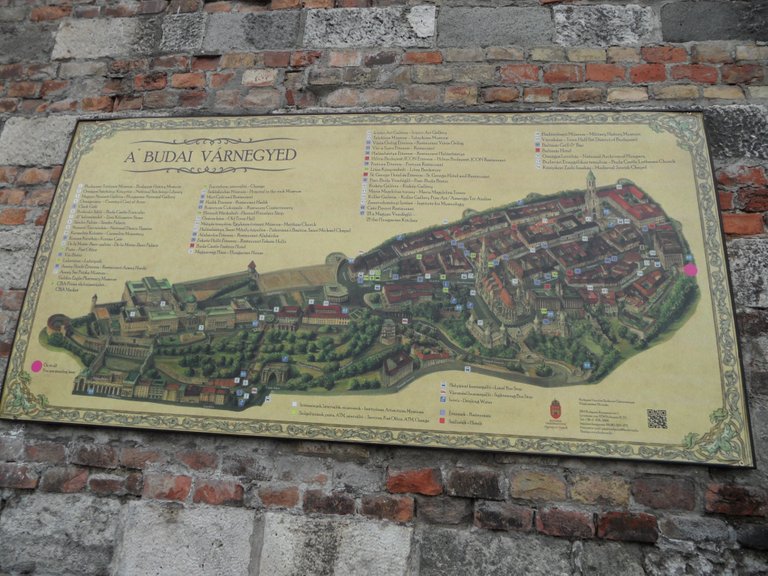
We walk through the pretty streets of the old town and arrive at the entrance to the castle. Today, it is a gallery that I definitely recommend visiting.
I have to admit that I was not a big lover of paintings, but the ones I saw here took my breath away. I reconsidered my opinion after this experience. I especially admire historical paintings with a military theme.
Well, let's go on a tour of the Buda Castle from the beginning.
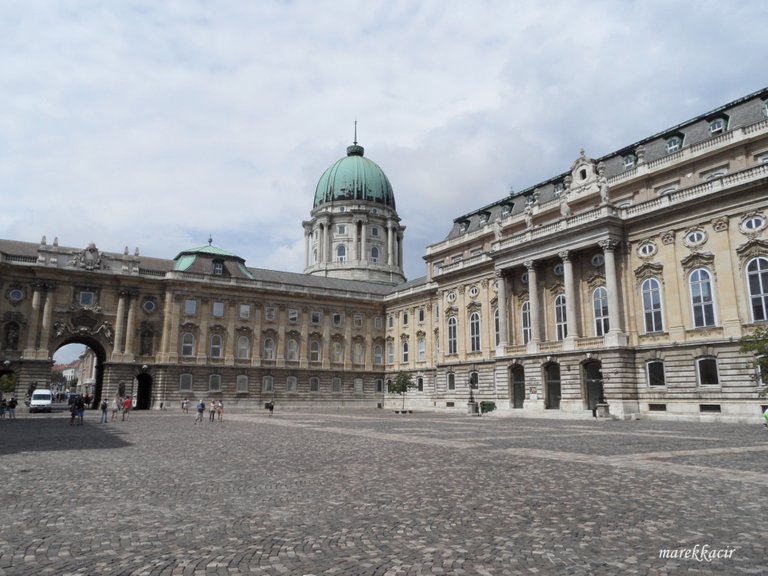
The castle was built during the reign of Béla IV in the years 1247-1265. It was expanded under King Sigismund of Luxembourg, and in its time it was the largest collection of Gothic palaces in the world. It underwent further reconstruction during the reign of Matej Corvín.
After the Battle of Mohács in 1526, it became part of the Ottoman Empire and the Habsburgs moved to Prešpork (Bratislava). The Ottoman rulers did not use the castle and it fell into disrepair. In 1686, the castle was destroyed during the recapture of Buda by the Habsburg army. In 1715, a smaller baroque palace was built on the site of the current castle and gradually expanded. In 1867, the royal palace played an important role in the coronation of Francis Joseph I as King of Hungary and became a symbol of peace between the Habsburgs and the Hungarian nation.
At the end of the 19th century the Hungarian autonomous government wanted to build a royal palace that would have elements of other European royal residences, and it was ceremonially opened in 1912. In 1944, the castle was bombed and burned.
It was renovated in 1968, but in a much more limited and less opulent style.
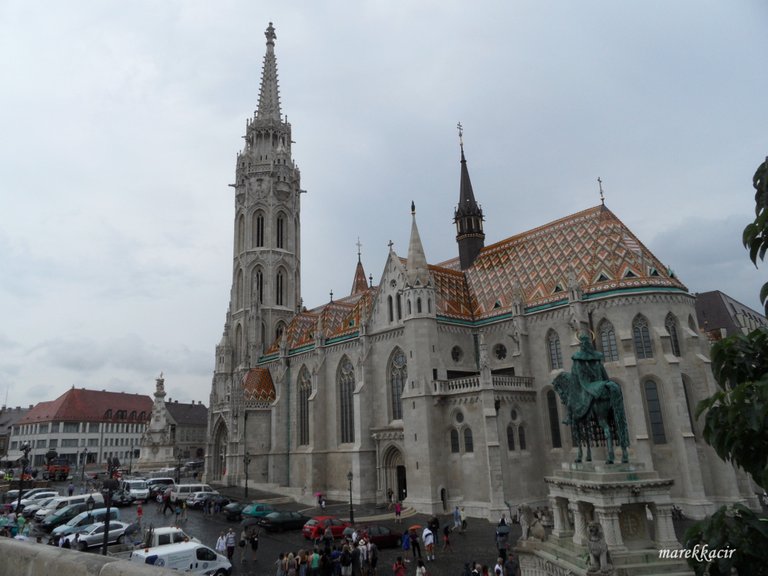
In the old town there is also the Church of St. Of course, we can't leave Matej out. It is already a very nice church from the outside.
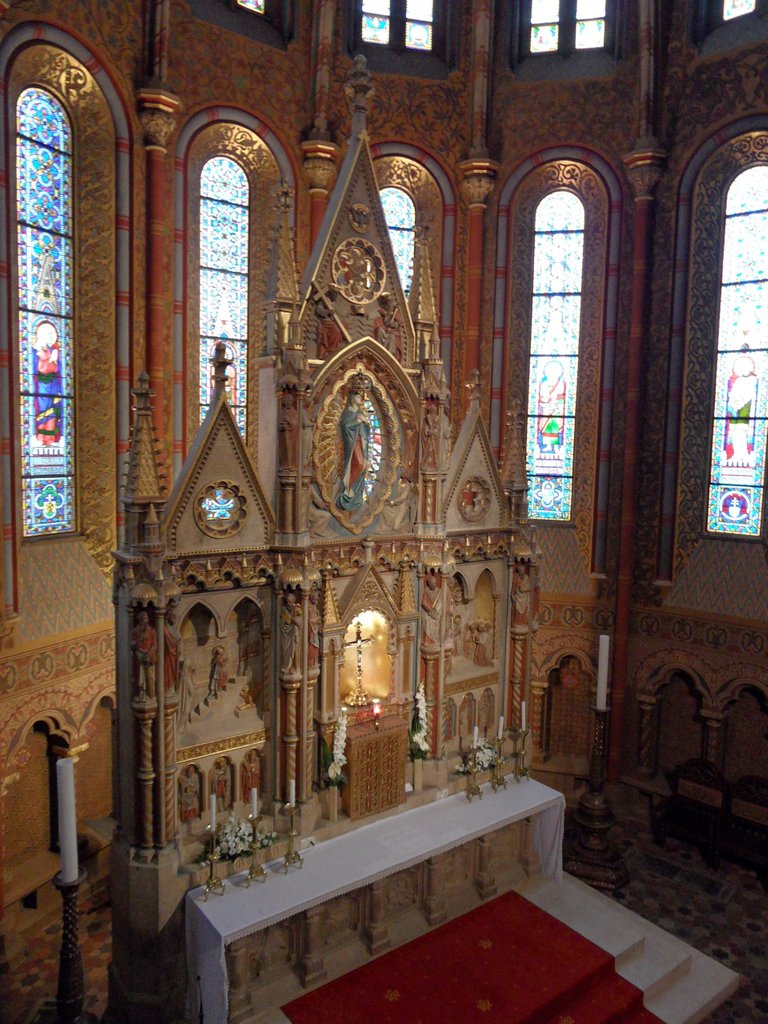
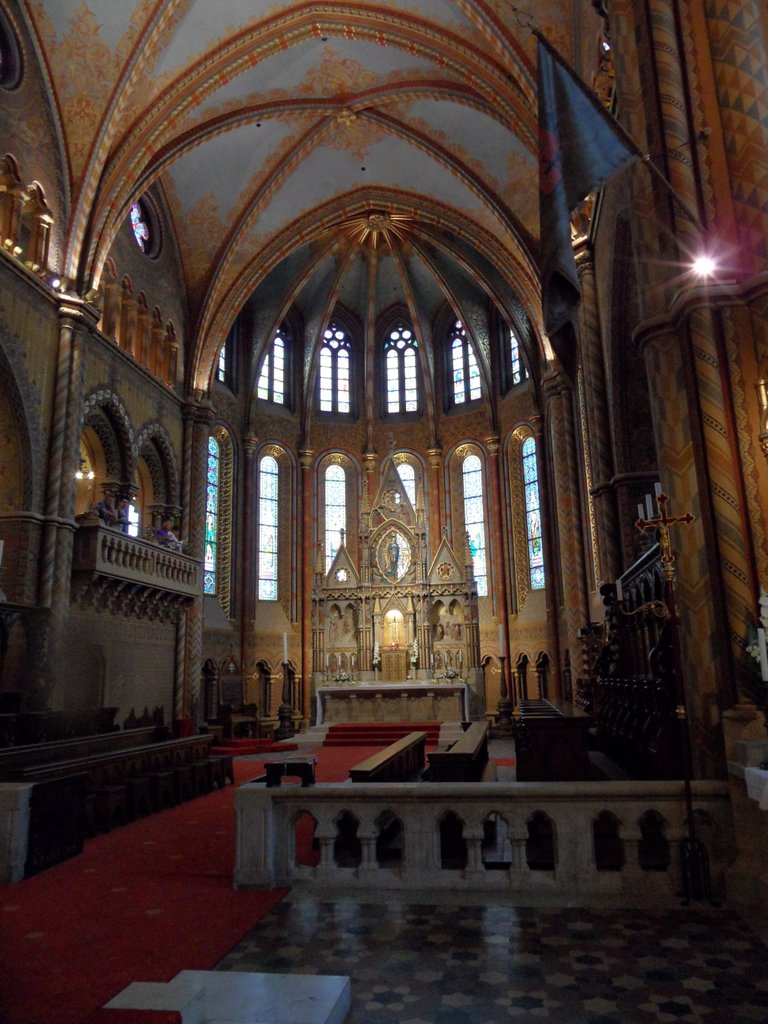
Fortunately, you can also go inside. We don't hesitate and go to look inside.
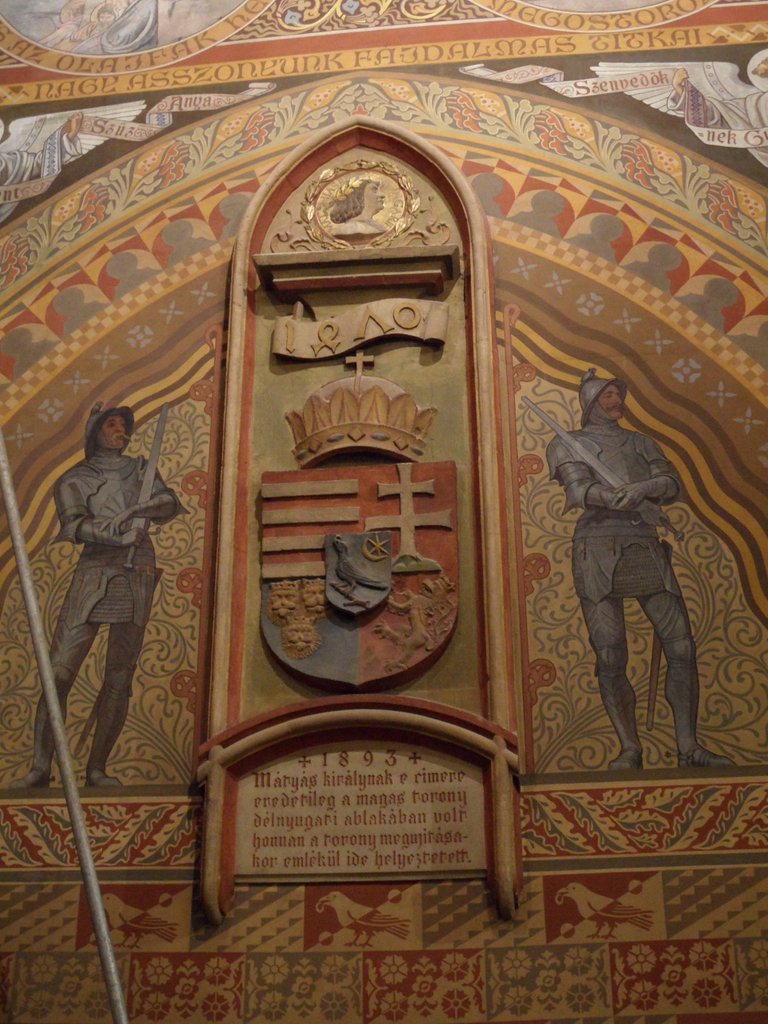
The original temple was built in the 13th century. During the Ottoman rule, it was rebuilt into a mosque, and after liberation it was rebuilt in the Baroque style and in the years 1873-1896 in the Neo-Gothic style. In 1867, Francis Joseph I was crowned here as King of Hungary.
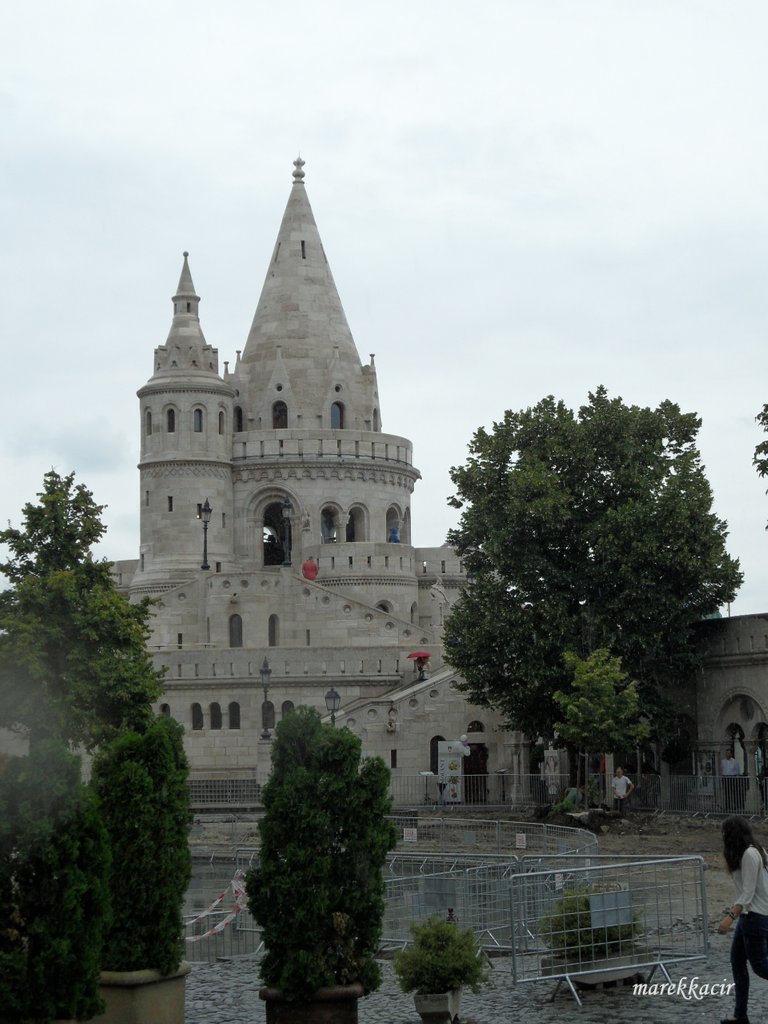
Right across from the Church of St. Mateja, there is an interesting building. It is the Fisherman's Bastion.
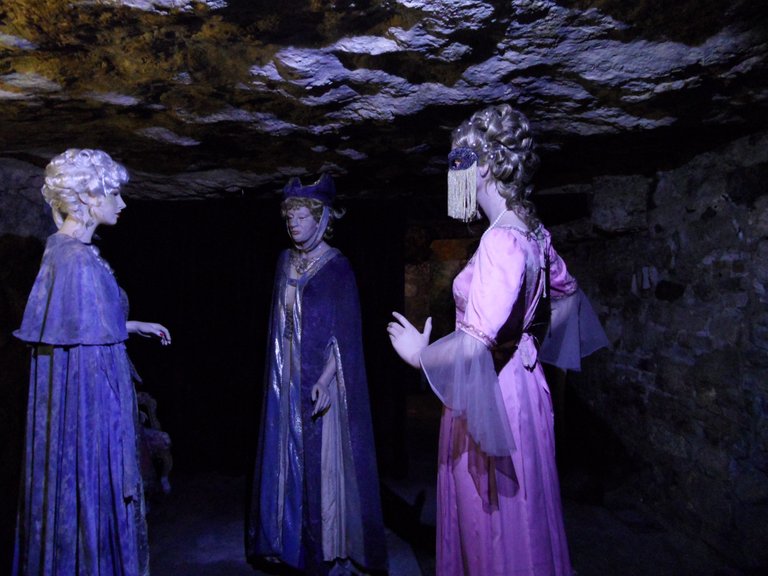
We are still staying on the castle hill. Well, not quite on the castle hill. We're going to look underground. Below the surface there is literally a labyrinth of alleys. Some have been used since the Middle Ages and gradually more and more were built. They were widely used by the defending German troops. They even built a hospital in part of these premises. Currently, there are mannequins and various medieval objects.

In the part where the hospital was during the Second World War, there is still an exhibition of what it probably looked like there. During the Cold War, intelligence was even based here. You can also see exhibits from this time here.
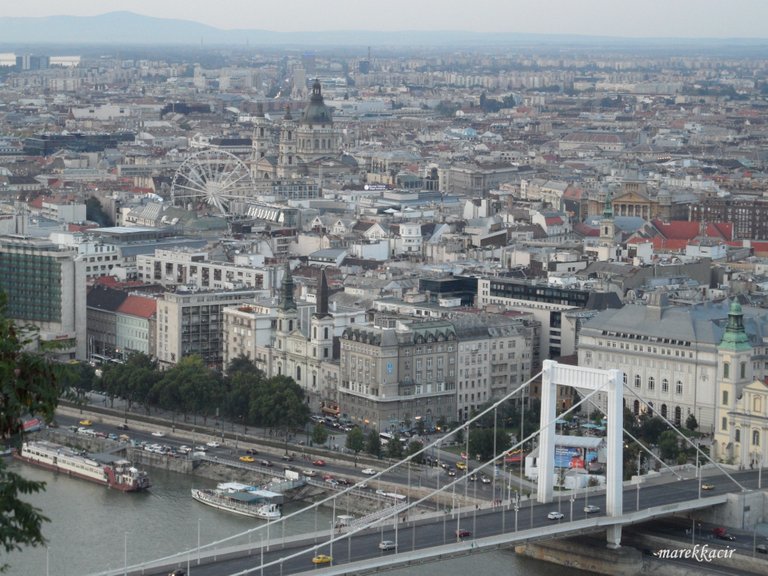
Time has advanced and we are climbing the hill. A beautiful view of the entire city slowly opens up to us. If you want to take a picture with the city in the background, then here is one such place. The only problem is the number of people who also want to take pictures here. We wait a while and it's our turn.
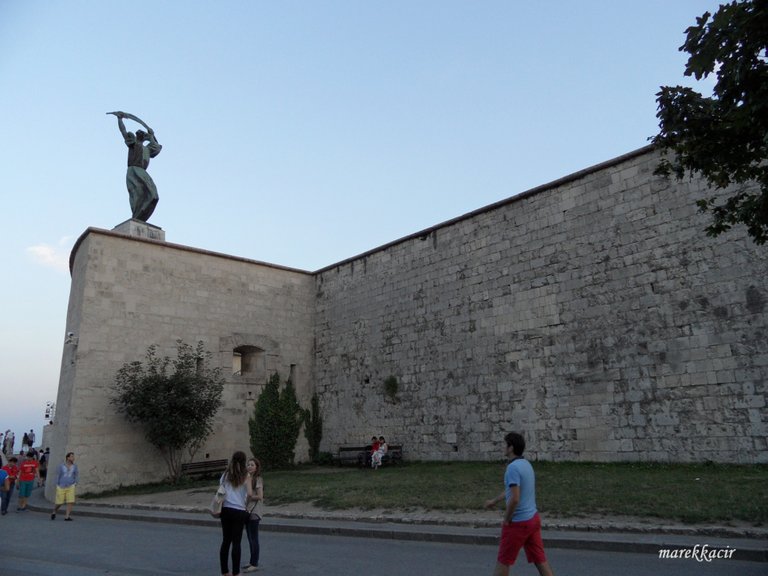
This place is located at the exit to the Citadel. She towers over the city, as if she is guarding it all the time and taking care of its safety. However, when we climb up, we realize that this is not quite true. After suppressing the Hungarian Uprising in 1848-49, Emperor Francis Joseph I had the Citadel built on Gellért Hill above Budapest, 60 of which were aimed at the city. It was supposed to intimidate the Hungarians and discourage them from further uprisings. Despite the Austro-Hungarian settlement in 1867, when the existence of the Hungarian state was recognized, the Austrian garrison remained in the citadel until 1897.
We are unlucky. We can't get inside, so we can only look at it from the outside. However, its majesty inspires respect. Honestly, I probably wouldn't he used to live in Budapest in those days. Walking around the city thinking that 60 shots can be fired at the city at any time.

On the way down, it is already visibly getting dark. We are going to the accommodation, but on the way we will see probably the most beautiful view of the castle. I just had to take a photo of this.
Thank you for joining my article.
Hi
Po Slovensky
Ahoj,
Ráno vstávame skoro, aby sme prešli čo najviac. Tešíme sa, pretože dnes sa okrem iného pozrieme zblízka na Budínsky hrad, Citadelu, Chrám sv. Mateja a mnoho ďalšieho. Tak bez zbytočných rečí poďme na to.
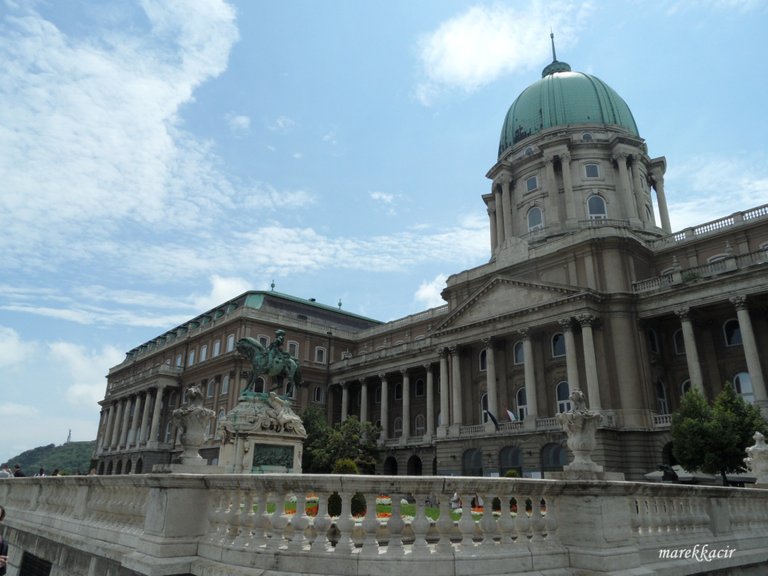
Nasadáme na metro a popod rieku Dunaj sa dostávame sa druhú stranu mesta – Budín. Budín bol hlavným mestom Uhorska, no od roku 1541 sa stal z metropoly Uhorska provinčným mestom Osmanskej ríše. Hlavným mestom Uhorska sa tak stala Bratislava. Až v roku 1686 Budín po šesťtýždňovom obliehaní dobylo habsburské vojsko.
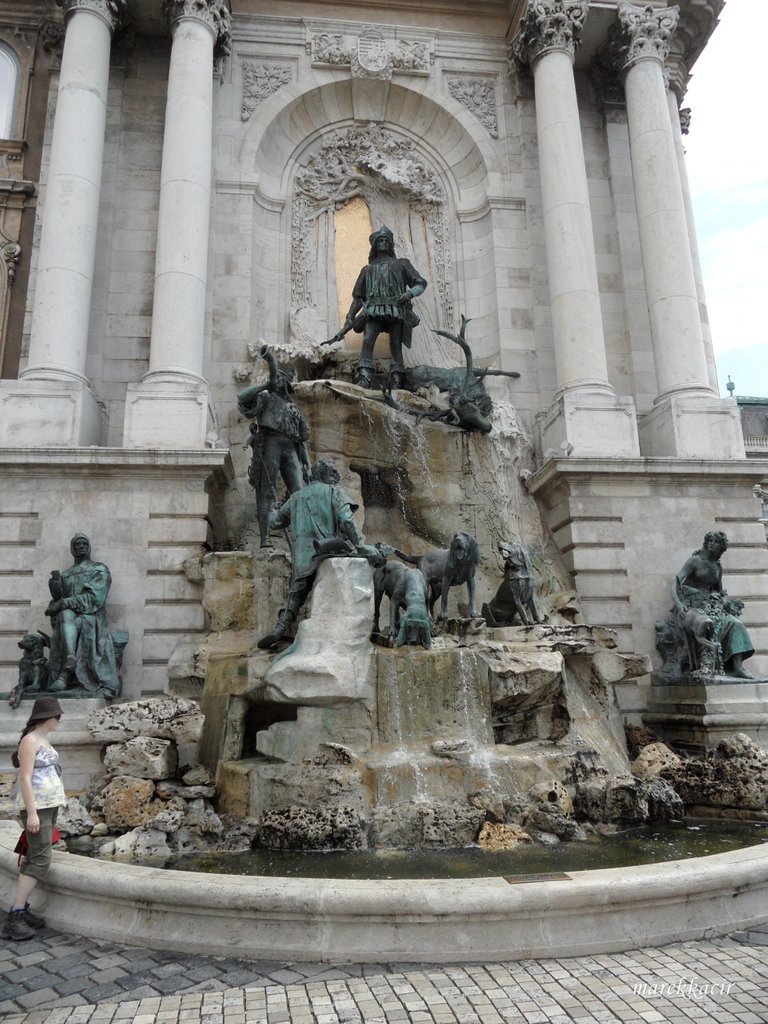
V roku 1703 sa stali Budín a Pešť slobodnými kráľovskými mestami a v roku 1848 sa stali hlavným mestom Uhorska miesto Bratislavy. Na modernizácii Pešti a Budína mal veľkú zásluhu gróf István Széchenyi. Ten inicioval aj postavenie prvého reťazového mosta cez Dunaj.
1.januára 1873 boli Budín, Pešť a Starý Budín zlúčené. V tom čase okrem Maďarov tvorili značnú časť obyvateľstva Nemci, Židia a Slováci. To sa zmenilo počas druhej svetovej vojny, kedy bola väčšina Židov odvlečená do vyhladzovacích táborov.
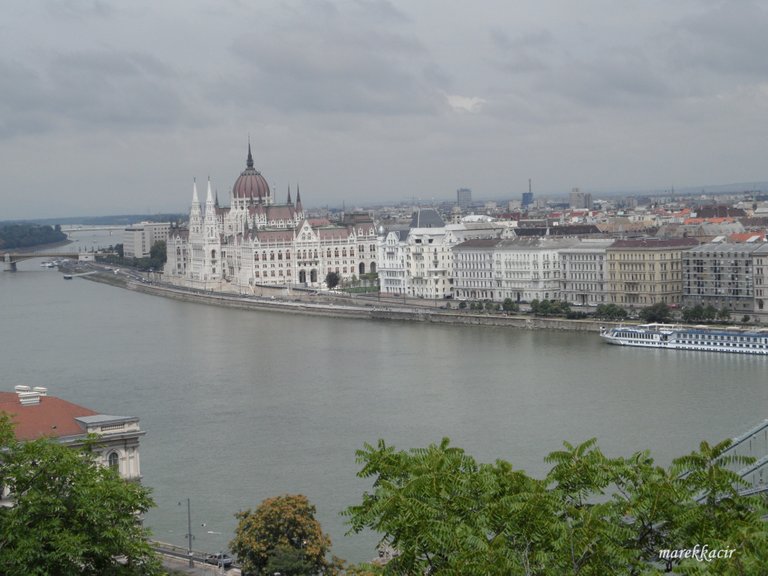
Ďalšie ťažké obdobie zažilo mesto v roku 1944, kedy ustupujúca nemecká armáda vyhodila všetky mosty cez Dunaj do vzduchu a 6 mesiacov sa bránila na pravom brehu. Hradná štvrť bola takmer zrovnaná so zemou vďaka neustálemu ostreľovaniu a bombardovaniu.

Na jeseň v roku 1956 sa do mesta opäť vrátili tanky. Budapešť sa stala centrom revolúcie proti komunistickej moci. Ľudové povstanie bolo krvavo potlačené sovietskymi tankami.
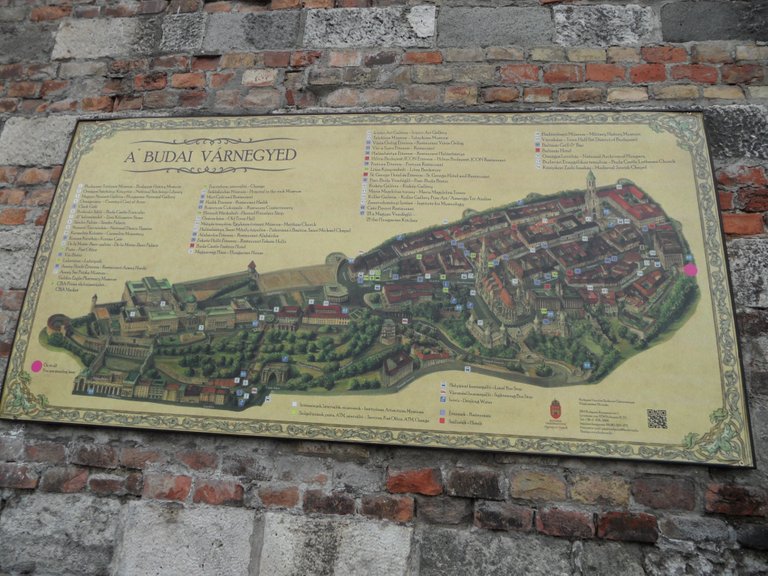
Prechádzame peknými uličkami starého mesta a prichádzame až k vchodu na hrad. Z toho je dnes galéria, ktorú určite odporúčam navštíviť.
Musím sa priznať, že som nebol veľký milovník obrazov, no tie ktoré som videl tu mi vyrazili dych. Svoj názor som po tejto skúsenosti prehodnotil. Obdivujem najmä historické obrazy s vojenskou tematikou.
No poďme na prehliadku Budínskeho hradu od začiatku.
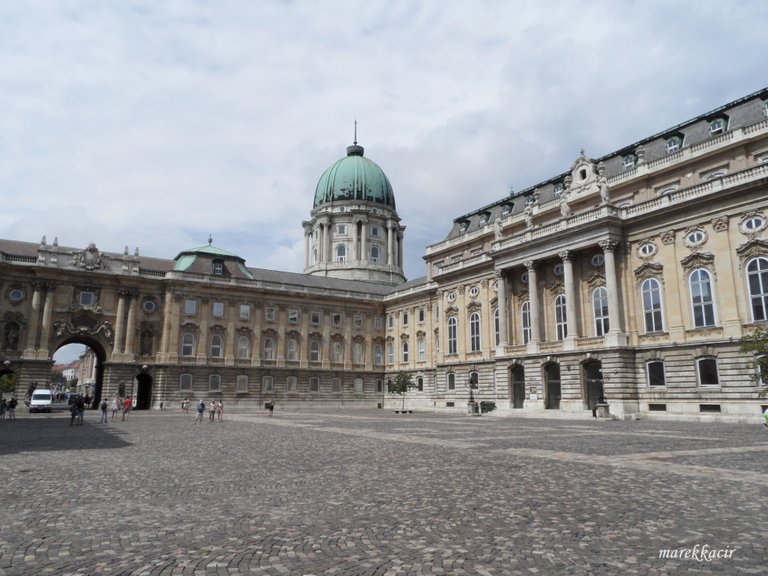
Hrad bol postavený za vlády Bélu IV v rokoch 1247-1265. Za kráľa Žigmunda Luxemburského bol rozšírený a vo svojej dobe to bol najväčší súbor gotických palácov na svete. Ďalšej prestavbe sa dočkal za vlády Mateja Korvína.
Po bitke pri Moháči v roku 1526 sa stal súčasťou Osmanskej ríše a Habsburgovci sa presťahovali do Prešporku (Bratislavy). Osmanský panovníci hrad nevyužívali a tak chátral. V roku 1686 bol hrad pri znovudobytí Budína habsburskou armádou zničený. V roku 1715 bol postavený menší barokový palác na mieste súčasného hradu a postupne rozšírený. V roku 1867 hral kráľovský palác dôležitú úlohu pri korunovácii Františka Jozefa I. uhorským kráľom a stal sa symbolom mieru medzi Habsburgovcami a maďarským národom.
Koncom 19. Stor. chcela uhorská autonómna vláda vybudovať kráľovský palác, ktorý by mal v sebe prvky ostatných európskych kráľovských sídel a v roku 1912 bol slávnostne otvorený. V roku 1944 bol hrad zbombardovaný a vypálený.
V roku 1968 bol zrekonštruovaný, ale v značne obmedzenom a menej honosnom štýle.
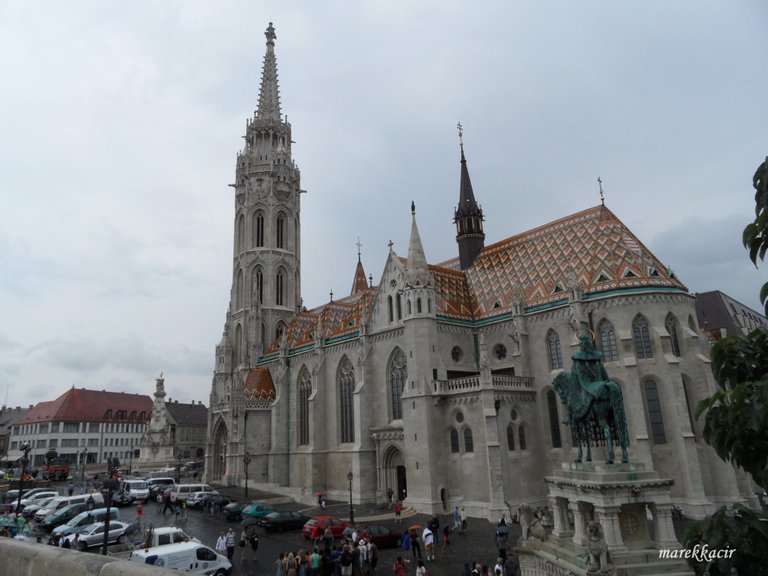
V starom meste sa nachádza aj Chrám sv. Mateja a ten samozrejme nemôžeme vynechať. Už z vonku je to veľmi pekný kostol.
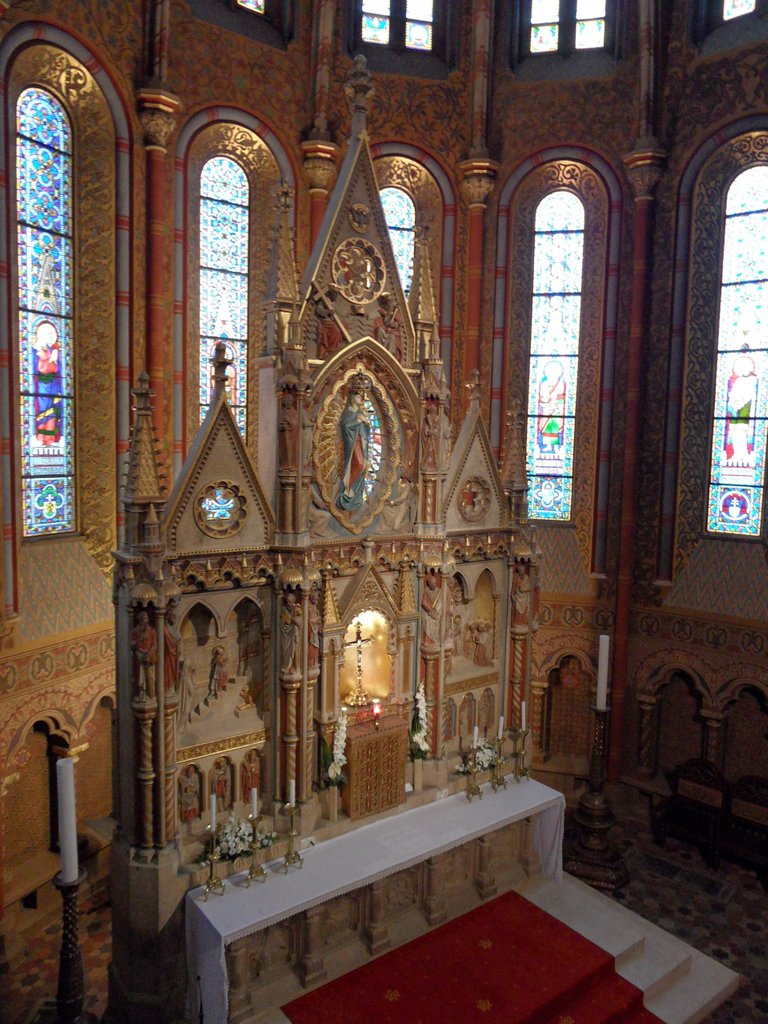
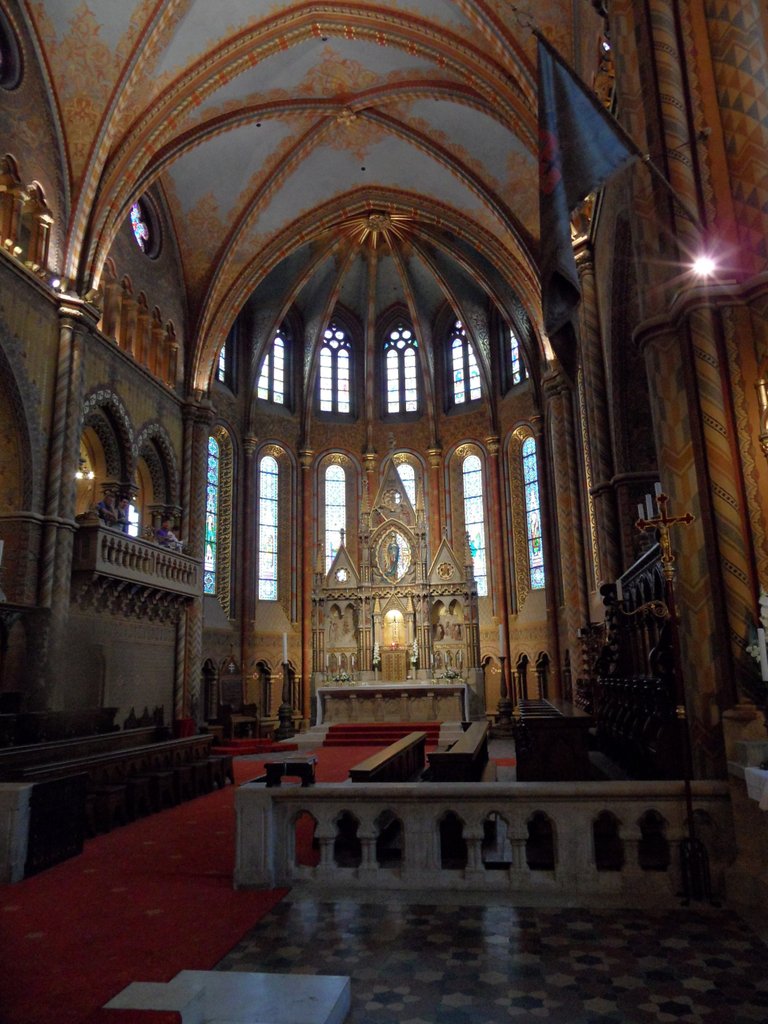
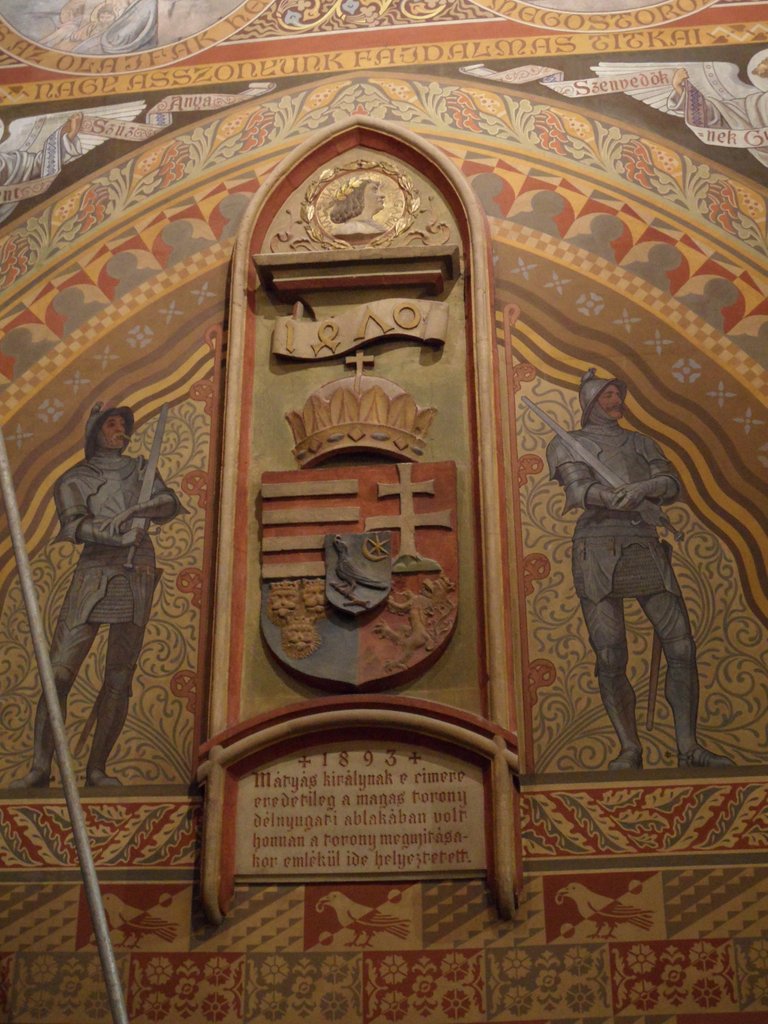
Našťastie sa dá ísť aj dovnútra. Neváhame a ideme sa pozrieť dnu.Pôvodný chrám bol postavený v 13. storočí. Počas osmanskej nadvlády bol prestavaný na mešitu a po oslobodení ho prestavali v barokovom štýle a v rokoch 1873-1896 v novogotickom štýle. V roku 1867 tu bol korunovaný František Jozef I. za Uhorského kráľa.
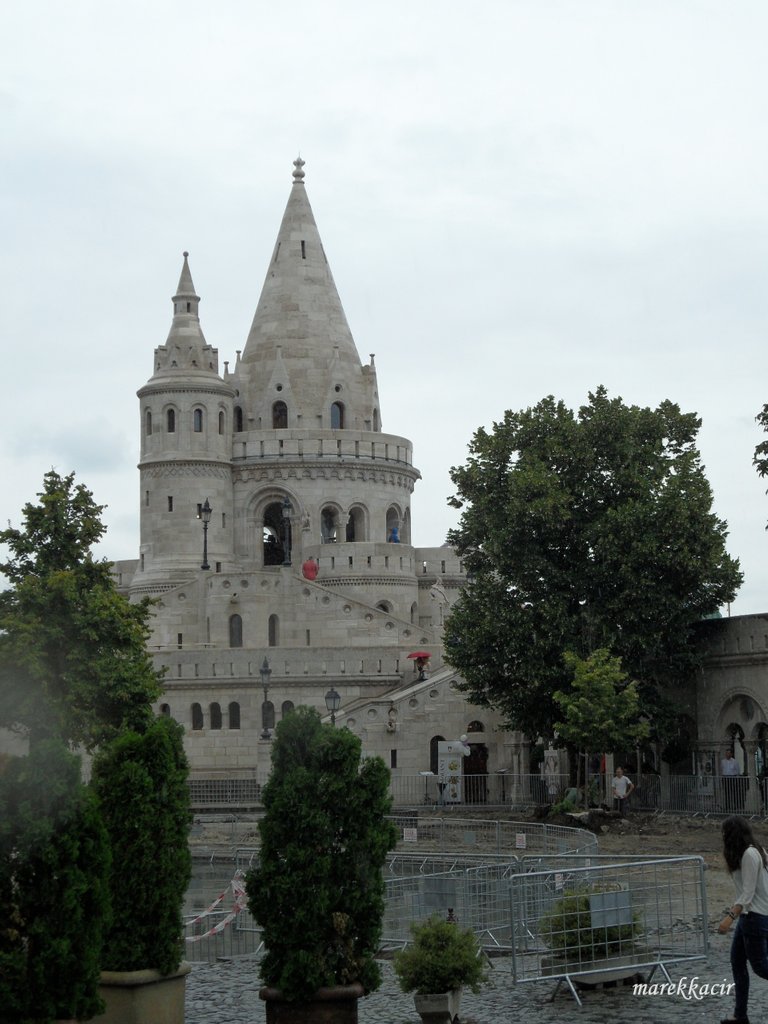
Hneď oproti Chrámu sv. Mateja sa nachádza zaujímavá stavba. Je to Rybárska bašta.

Na hradnom vrchu ešte ostávame. No nie tak celkom na hradnom vrchu. Ideme sa pozrieť do podzemia. Pod povrchom sa nachádza doslova labyrint uličiek. Niektoré sa používali už od stredoveku a postupne sa budovali ďalšie a ďalšie. Vo veľkom ich využívali brániace sa nemecké vojská. Tie v časti týchto priestorov vybudovali dokonca nemocnicu. V súčasnosti sa tu nachádzajú figuríny a rôzne stredoveké predmety.
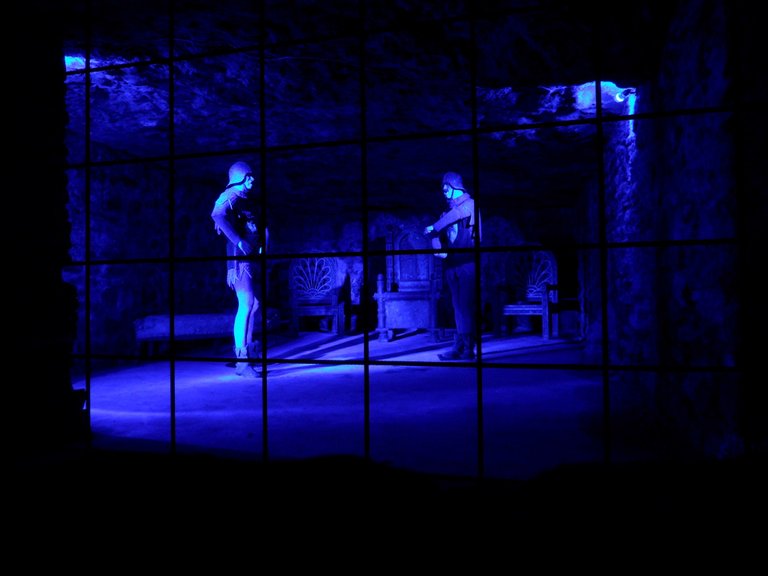
V časti, kde bola počas Druhej svetovej vojny nemocnica sa stále nachádza expozícia ako to tam asi vyzeralo. V čase studenej vojny tu dokonca sídlila rozviedka. Aj z tejto doby tu môžete vidieť exponáty.
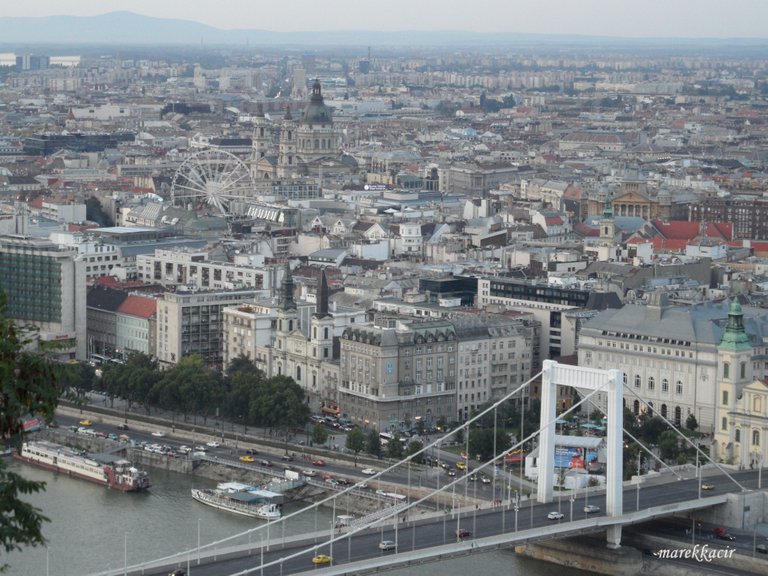
Čas pokročil a my stúpame do kopca. Pomaly sa nám otvára krásny výhľad na celé mesto. Ak sa chcete odfotiť s mestom v pozadí, tak tu je jedno z takýchto miest. Jediným problémom je množstvo ľudí, ktorí sa tu chcú tiež odfotiť. Chvíľu čakáme a už sme na rade my.
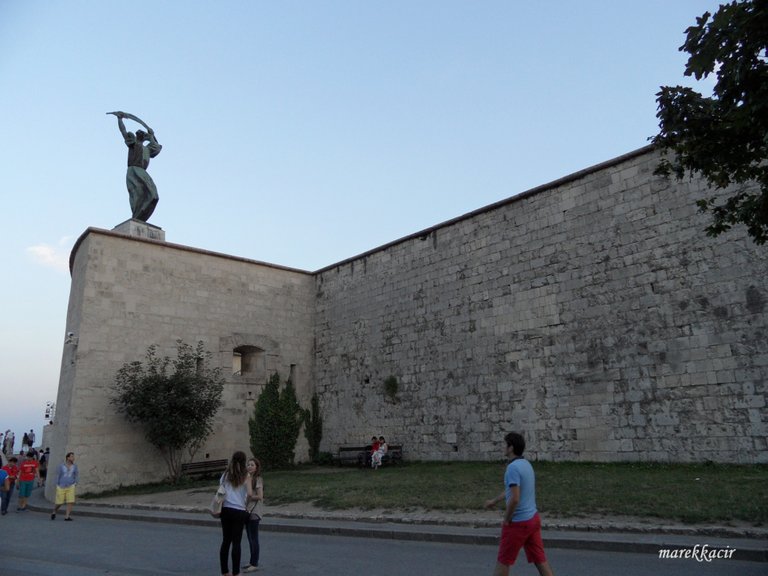
Toto miesto sa nachádza pri výstupe na Citadelu. Tyčí sa nad mestom, akoby ho celý čas strážila a dbala o jeho bezpečie. Pri výstupe hore však prichádzame na to, že to nie je celkom pravda. Po potlačení Uhorského povstania v rokoch 1848-49 dal cisár František Jozef I. na Gellértovom vrchu nad Budapešťou postaviť Citadelu, ktorej 60 diel mierilo na mesto. Mala zastrašiť Maďarov a odradiť ich od ďalších povstaní. Aj napriek rakúsko-uhorskému vyrovnaniu v roku 1867, kedy bola uznaná existencia uhorského štátu, zostala rakúska posádka v citadele až do roku 1897.
Máme smolu. Dovnútra sa nedostaneme a tak si ju obzeráme len zvonku. Jej majestátnosť však budí rešpekt. Úprimne, asi by som nechcel v tých časoch bývať v Budapešti. Chodiť po meste s myšlienkou, že hocikedy môžu na mesto vypáliť 60 striel.
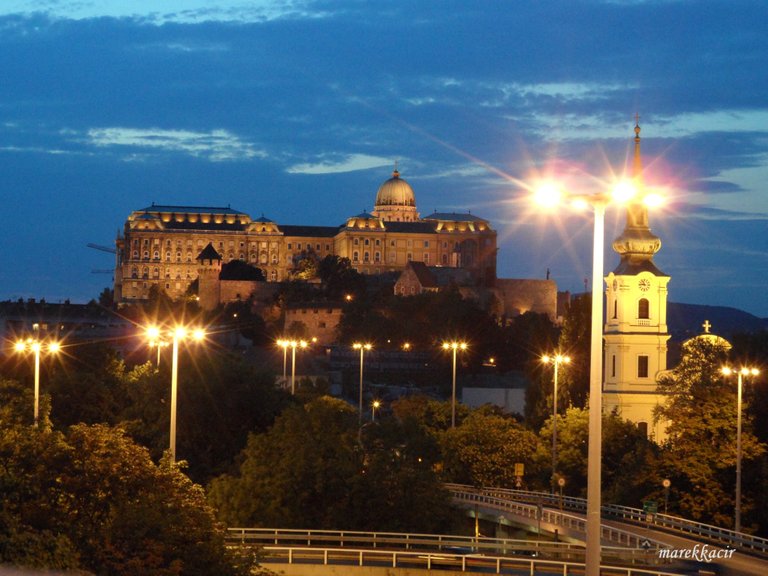
Pri ceste dole sa už viditeľne stmieva. My sa poberáme na ubytovanie, no cestou sa nám naskytne asi najkrajší pohľad na hrad. Toto som si skrátka musel vyfotografovať.
Ďakujem za pristavenie sa pri mojom článku.
Ahoj.
Congratulations, your post has been added to Pinmapple! 🎉🥳🍍
Did you know you have your own profile map?
And every post has their own map too!
Want to have your post on the map too?
Congratulations @photoparadise! Your post brought a smile to the TravelFeed team so we have sent you a smiley. Keep up the good job. 🙂
Thanks for using TravelFeed!
@for91days (TravelFeed team)
PS: Have you joined our Discord yet? This is where over 1000 members of the TravelFeed come together to chat. Join us!
Hiya, @choogirl here, just swinging by to let you know that this post made it into our Honourable Mentions in Daily Travel Digest #1773.
Your post has been manually curated by the @pinmapple team. If you like what we're doing, please drop by to check out all the rest of today's great posts and consider supporting other authors like yourself and us so we can keep the project going!
Become part of our travel community:
Congratulations @photoparadise! You have completed the following achievement on the Hive blockchain And have been rewarded with New badge(s)
Your next target is to reach 10000 upvotes.
You can view your badges on your board and compare yourself to others in the Ranking
If you no longer want to receive notifications, reply to this comment with the word
STOPCheck out our last posts:
Support the HiveBuzz project. Vote for our proposal!